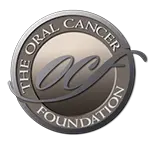
Clinical Interests
Oral cancer, oral mucosal lesions, odontogenic cysts/neoplasms, salivary gland neoplasms.
NOL7 is a Novel Master Regulator of Angiogenesis
My lab cloned NOL7, a novel gene that induces an anti-angiogenic phenotype and suppresses in vivo tumor growth by 95%. NOL7 acts as a master regulator of angiogenesis by modulating the expression of angiogenesis-associated mRNAs via both steady-state downregulation and posttranscriptional upregulation. NOL7 itself is positively regulated by the retinoblastoma (Rb) gene, supporting the paradigm shift that Rb can act as a positive regulator of gene transcription. Our long-term goal is to understand how transcriptional and posttranscriptional regulation of angiogenesis-related mRNAs contributes to the expression of the angiogenic phenotype and to leverage this knowledge to develop novel therapeutic approaches. Our central hypothesis is that Rb positively regulates NOL7 expression and that loss of NOL7 protein expression results in decreased regulation of NOL7 target mRNA transcripts, the gain of expression of the pro-angiogenic phenotype and the loss of tumor growth inhibition. We further hypothesize that reactivation of NOL7, particularly in HPV-associated mucosal lesions where Rb is inactivated, is an effective therapeutic approach to inhibit the angiogenic phenotype. This research is innovative because it will further define the mechanisms by which NOL7 acts as a master regulator of angiogenesis. It will also provide fundamental insights into the poorly understood area of posttranscriptional regulation of angiogenesis.
Targeting the Angiogenic Phenotype in HNSCC Chemoprevention
The angiogenic phenotype is both an early and an essential step in the development of HNSCC, making it an attractive target for cancer prevention. The long-term goal of our work is to develop novel, nontoxic chemopreventive strategies for head and neck cancer (HNSCC) that are based upon the inhibition of angiogenesis. Using the 4-NQO mouse model, we have demonstrated that ABT-510 (global inhibitor of angiogenesis), Erlotinib (tyrosine kinase inhibitor (TKI) against EGFR), ZD6474 (Vandetanib, a dual TKI against EGFR and VEGFR-2), and Crizotinib (dual TKI against c-Met and ALK) significantly decreased the incidence of dysplasia and HNSCC. Clinical trials have been initiated to evaluate the efficacies of two of these agents.
Defining Mechanisms of Angiogenic Resistance in the Chemopreventive Setting
Tumors develop resistance to anti-angiogenic therapies via a number of different mechanisms. However, data regarding resistance in the chemopreventive setting are limited. Our central hypothesis is that acquired resistance is mediated in part by the expression of alternative angiogenic signaling pathways. Using the 4-NQO model and RNA expression profiling, we are currently identifying the alternative angiogenic factors produced by resistant lesions. We are functionally validating these findings by determining if prolonged chemopreventive efficacy can be achieved by targeting the alternative angiogenesis pathways once their expression has been detected. This work may lead to subsequent chemoprevention trials in which the expression of alternative/resistance pathways are actively monitored and treated in order to prolong the chemopreventive effect. This research is innovative because it represents the first attempts to define mechanisms of angiogenesis resistance in the HNSCC chemoprevention setting. It is likely to have a positive impact on human health because it may provide insights into the biology of resistance as well as define therapeutic models for prolonging efficacious chemopreventive strategies for HNSCC.
Decreasing Systemic Toxicities With Nanoparticle-based Delivery Systems
Because current chemoprevention strategies require prolonged systemic administration lasting months to years, there is considerable risk for the development of acute and chronic toxicities. Conversely, directed local delivery has demonstrated limited success as directed topical application to focal mucosal areas will insufficiently treat the entire area of genetically altered mucosa. Furthermore, in contrast to carcinogen-associated mucosa, which often appears as identifiable leukoplakias or erythroplakias, HPV-associated premalignancies/cancers are not easily observed clinically as they typically occur in difficult to examine locations such as the tonsil and the base of tongue. We hypothesize that chitosan-based nanoparticles, containing siRNAs targeting angiogenesis signaling pathways, will be superior to treatments involving systemically administered TKIs. Similarly, we hypothesize that chitosan nanoparticles containing siRNAs for HPV-associated oncoproteins (E6 and/or E7) will provide a novel mechanism of chemoprevention for patients harboring high risk HPV infections of the upper aerodigestive tract.



